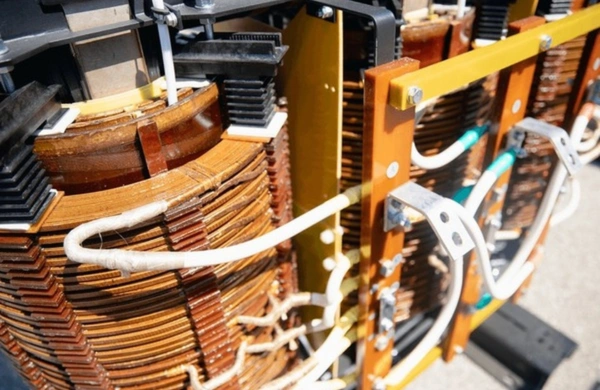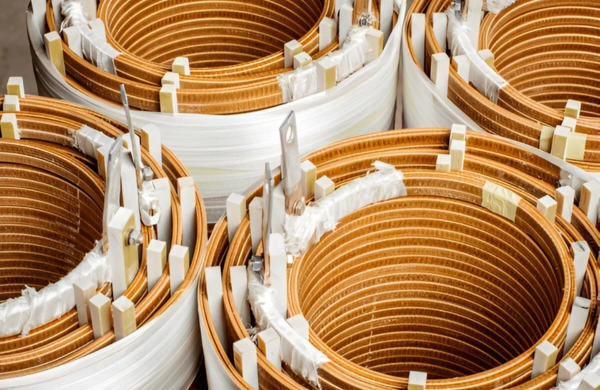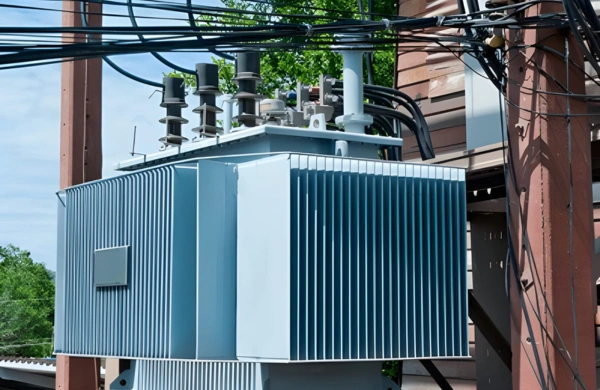Introduction
As North America accelerates deployment of distributed energy resources (DERs), microgrids, and localized power systems, the need for high-reliability medium-voltage (MV) and low-voltage (LV) transformers has never been greater. These transformers serve as the backbone of modern distribution networks, delivering safe, stable, and efficient voltage conversion for industrial facilities, commercial infrastructure, renewable plants, and utility-managed distributed assets.
Know About High-Reliability MV/LV Transformers for Distributed Power Systems
MV/LV transformers support decentralized architectures by providing voltage regulation, electrical isolation, and system resilience under dynamic loading conditions. Unlike traditional grid environments, distributed systems require transformers with superior short-circuit strength, tighter regulation, advanced insulation performance, and long-term thermal reliability.
Zetwerk manufactures high-reliability MV/LV transformers engineered for modern distributed power architectures. Built to IEC, IEEE, and ANSI standards, Zetwerk’s transformers deliver robust performance in microgrids, DER installations, EV charging networks, and industrial distribution systems — ensuring stable operation, low energy loss, and extended equipment lifespan.
1. The Growing Importance of MV/LV Transformers in Distributed Power Systems
Distributed power architectures — including microgrids, rooftop solar, commercial CHP units, wind farms, BESS (battery energy storage systems), and EV charging networks — are reshaping how electricity is generated and consumed. These distributed assets require transformers capable of managing bi-directional power flow, fluctuating load patterns, and fault conditions that differ from traditional centralized grids.
Key functional roles of MV/LV transformers in distributed systems include:
- Stepping down medium-voltage utility supply for local consumption.
- Providing isolation between distributed assets and the main grid.
- Supporting reverse power flow from renewables and storage.
- Enhancing resilience by enabling local energy islands.
- Maintaining voltage stability under variable loads.
Zetwerk’s MV/LV transformers are built to withstand these operational demands while maintaining long-term reliability in diverse industrial and utility environments.
2. Engineering Design and Construction Excellence
The reliability of any MV/LV transformer begins with its materials, design architecture, and precision manufacturing. Zetwerk engineers every transformer for performance durability, energy efficiency, and environmental resilience.
Core Design
- Manufactured with CRGO (Cold Rolled Grain Oriented) steel or amorphous metal for low core losses.
- Step-lap joint design reduces hot spots and magnetizing current.
- Precision machining ensures minimal acoustic noise — essential for commercial installations.
Windings
- High-conductivity copper or aluminum conductors.
- Layered and interleaved winding patterns reduce leakage reactance.
- Vacuum drying ensures insulation strength and moisture elimination.
- Electrostatic shielding available for low-noise applications.
Insulation System
- Class F (155°C) or Class H (180°C) insulation systems depending on duty cycle.
- Oil-impregnated paper (OIP), cast resin, or VPI insulation tailored for environment and load characteristics.
- Dielectric reliability validated through partial discharge testing.
Enclosures
- Weatherproof IP23–IP55 enclosures for outdoor and industrial environments.
- Corrosion-resistant coatings for coastal, desert, and chemical plant installations.
- Multiple mounting configurations: pad-mount, pole-mount, skid-mount, or indoor floor-mounted.
3. Electrical and Thermal Performance Specifications
Zetwerk’s MV/LV transformers deliver consistent electrical performance with optimized efficiency for distributed energy and localized power systems.
Typical specifications:
- Primary Voltage (MV): 6.6 kV, 11 kV, 13.8 kV, 24 kV, and up to 33 kV
- Secondary Voltage (LV): 208 V to 690 V
- Power rating: 50 kVA to 5 MVA
- Efficiency: ≥98.5% (dry-type), ≥99% (oil-filled)
- Frequency: 50 Hz or 60 Hz
- Impedance: Customizable for fault current limitation
- Insulation level: BIL up to 170 kV
- Cooling: AN, AF, ONAN, ONAF, or OFAF depending on rating and environment
Each transformer is optimized to maintain tight voltage regulation under variable loading conditions common in distributed architectures.
4. Transformer Types for Distributed Power Networks
Zetwerk offers a wide range of transformer configurations to support diverse DER and microgrid applications.
a) Dry-Type Transformers (VPI / Cast Resin)
- Ideal for indoor, high-traffic, or environmentally sensitive locations.
- Fire-safe, lightweight, and minimal maintenance.
- Strong thermal performance for high harmonic load environments.
b) Oil-Immersed MV/LV Transformers
- Excellent dielectric strength and cooling efficiency.
- Suitable for outdoor substation or heavy industrial applications.
- Compatible with mineral oil, natural ester, or synthetic ester fluids.
c) Eco-Friendly Amorphous Core Transformers
- Up to 70% lower core losses.
- Ideal for solar farms, BESS, and commercial renewable hubs.
d) Pad-Mounted Transformers for Urban & Commercial Installations
- Tamper-proof design for public spaces.
- Compact footprint for distribution yards and EV charging plazas.
- Meets IEEE C57.12.34 and C57.12.38 standards.
e) Pole-Mounted MV/LV Transformers
- Common in distributed rural networks.
- Lightweight, corrosion-protected, and engineered for overcurrent resilience.
5. Distributed Power System Applications
MV/LV transformers are used across a wide range of distributed installations:
Microgrids
- Campus, military, industrial, and community microgrids rely on transformers for voltage balancing and islanding operations.
Solar & Wind Plants
- Step-up/step-down configurations connecting inverters to MV feeders.
- Optimized for harmonics, intermittent loads, and bidirectional power flow.
Battery Energy Storage Systems (BESS)
- High cycling frequency requires transformers with thermal endurance and low impedance.
EV Charging Infrastructure
- Supports high-current DC fast-charging networks.
- Ensures voltage stability during load spikes.
Industrial and Commercial Facilities
- Provides reliable LV power for automation, HVAC systems, and process lines.
Zetwerk engineers tailor each transformer to match environmental exposure, load type, cooling needs, and regional utility specifications.
6. Reliability, Safety, and Operational Resilience
Distributed systems demand transformers capable of handling high harmonic content, variable loads, and voltage fluctuations. Zetwerk integrates multiple features to ensure resilience and safety:
- High short-circuit withstand capability.
- Thermal sensors and protection relays (PT100, WTI, OTI).
- Pressure relief valves and Buchholz relays (oil-immersed units).
- Electrostatic shields for harmonic mitigation.
- Fire-safe materials and arc-resistant enclosures.
- Optional surge protection for feeder-level voltage spikes.
Each transformer is engineered for long operational lifespan even under aggressive load cycling typical in DER environments.
7. Testing and Standards Compliance
Zetwerk validates every transformer using international testing standards to ensure performance integrity.
Testing includes:
- Ratio, polarity, and phase displacement testing
- No-load and load loss measurement
- Impedance and regulation verification
- Lightning impulse and power frequency withstand tests
- Temperature rise and thermal stability
- Partial discharge tests
- Short-circuit strength evaluation
All designs comply with:
- IEC 60076
- IEEE C57.12
- ANSI / CSA standards
- DOE 10 CFR 431 efficiency norms
Complete FAT documentation is provided for utility and industrial project requirements.
8. Zetwerk’s Manufacturing and Engineering Capabilities
Zetwerk leverages an integrated manufacturing ecosystem with advanced automation and precision quality control.
Capabilities include:
- CNC core cutting and automated lamination stacking
- High-speed automated winding with controlled tension
- Vacuum drying and oil filling systems
- Resin casting for dry-type configurations
- Computerized FAT with real-time data logs
- ISO 9001, ISO 14001, ISO 45001 certified processes
This vertically integrated approach ensures consistency, reliability, and on-time delivery for North American projects.
Conclusion
Distributed power systems require MV/LV transformers that deliver long-term reliability, tight voltage control, and thermal stability under dynamic conditions. Whether supporting microgrids, renewable generation, EV infrastructure, or industrial distribution networks, these transformers must operate efficiently and safely across a wide range of environmental and electrical challenges.
Zetwerk manufactures high-reliability MV/LV transformers engineered for superior electrical performance, mechanical strength, and compliance with global standards. Designed for distributed energy applications, each transformer undergoes rigorous testing and quality validation to ensure dependable service life in demanding industrial and utility environments.




With precision engineering, scalable production, and a commitment to quality, Zetwerk continues to support North America’s transition toward decentralized, resilient, and efficient power systems.
FAQs
a. They step down medium-voltage supply to low-voltage distribution levels while providing isolation and voltage stability.
a. Yes. They support bidirectional power flow and harmonics typical of solar, wind, and BESS systems.
a. Air-cooled (AN/AF) and oil-cooled (ONAN/ONAF/OFAF) configurations.
a. Yes. Designs meet IEEE, IEC, ANSI, CSA, and DOE efficiency requirements.
a. Absolutely. Voltages, insulation class, enclosures, cooling, and tap changers can be fully customized.








